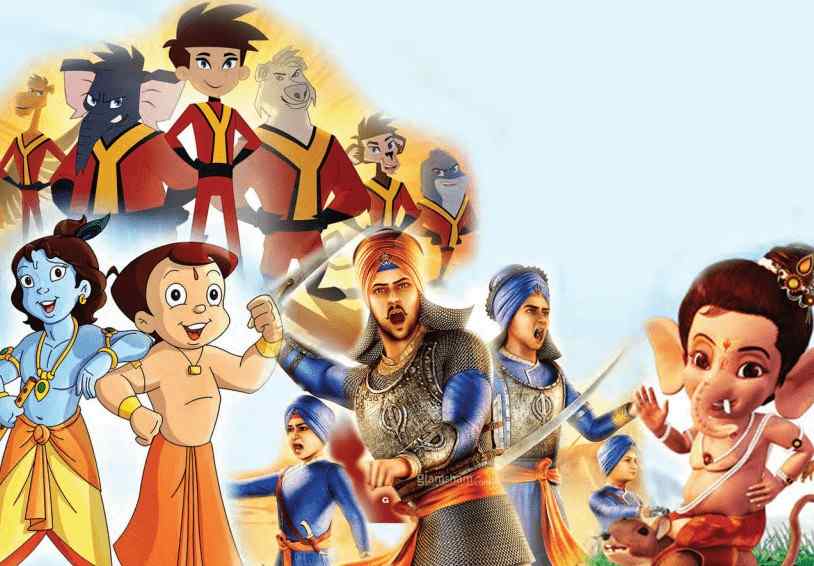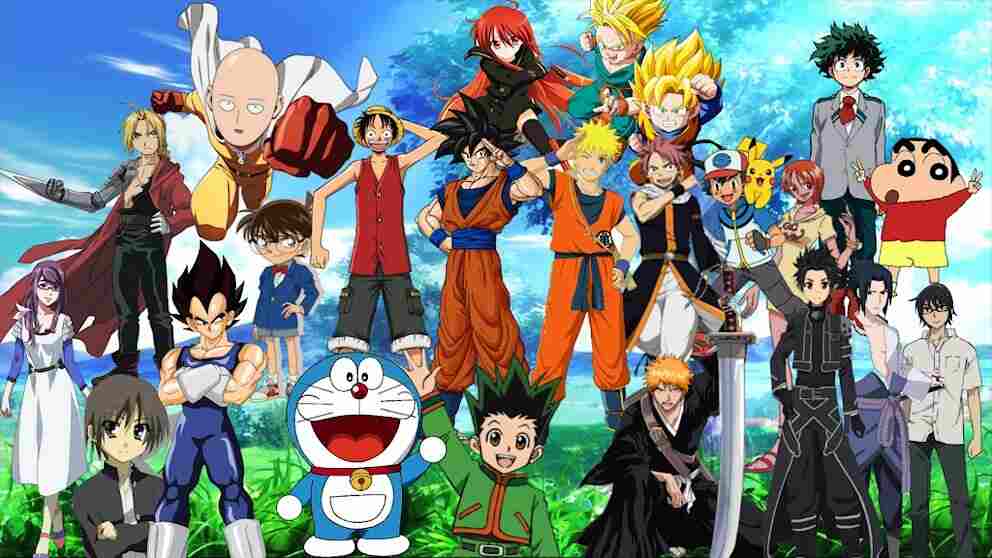Table of Contents
Introduction
The animation industry in India has seen a significant transformation over the past few decades, emerging as a global player in the field. Once a niche segment, animation in India is now a multi-billion-dollar industry, contributing significantly to the country’s economy and cultural exports. This growth has been fueled by a combination of technological advancements, a surge in demand for animated content, and the increasing popularity of digital platforms. As India continues to establish itself as a major player in the global animation market, understanding the factors behind its growth and the challenges it faces is crucial.
History and Evolution of Animation in India
From hand-drawn cartoons in the early 20th century to state-of-the-art CGI, the journey of animation in India has been nothing short of remarkable. The history of Indian animation dates back to 1915 when Dadasaheb Phalke, the father of Indian cinema, created a short animated film titled “The Growth of a Pea Plant.” However, it wasn’t until the 1950s that animation began to gain traction in India with the establishment of the Films Division of India, which produced educational and social awareness films using animation.
The 1990s marked a turning point for Indian animation, with the advent of satellite television and the entry of global players like Cartoon Network and Disney Channel. This period saw the rise of Indian animated series such as “Shaktimaan” and “Chhota Bheem,” which became household names. By 2008, “Chhota Bheem” alone had over 40 million viewers across the country, highlighting the massive appeal of Indian animation. The introduction of computer-generated imagery (CGI) in the 2000s further revolutionized the industry, allowing Indian studios to produce high-quality content for both domestic and international audiences.
Current Market Scenario
Today, the Indian animation market is a vibrant and rapidly growing industry, catering to both domestic and international audiences. According to the latest reports, the Indian animation industry was valued at approximately USD 1.23 billion in 2022 and is expected to reach USD 2.9 billion by 2026, growing at a compound annual growth rate (CAGR) of 15.4%. This impressive growth can be attributed to several factors, including the increasing demand for content across various platforms, the rise of digital media, and the expansion of the gaming industry.
Key players in the Indian animation industry include studios like Toonz Animation, Green Gold Animation, and Tata Elxsi. These studios have not only produced popular animated series for the Indian market but have also collaborated with international studios to work on global projects. For instance, Toonz Animation has worked on projects for major studios like Disney, Nickelodeon, and Marvel, showcasing the talent and capabilities of Indian animators on the global stage. In 2022 alone, Toonz Animation generated over USD 50 million in revenue, a testament to the growing international demand for Indian animation.
Key Factors Driving Growth
Several factors have contributed to the rapid expansion of the animation market in India. One of the primary drivers is the increased demand for content across multiple platforms, including television, OTT (over-the-top) platforms, and mobile applications. The rise of digital media has opened up new avenues for content distribution, allowing Indian animation studios to reach a global audience. In 2023, OTT platforms in India contributed approximately 35% of the total revenue generated by the animation industry, highlighting the shift towards digital content consumption.
Another significant factor is the growing popularity of Indian animated content. Characters like Chhota Bheem, Motu Patlu, and Krishna have become cultural icons, resonating with audiences not just in India but also in countries like the U.S., the U.K., and Southeast Asia. The success of these characters has led to the creation of merchandise, theme parks, and even feature films, further boosting the industry’s growth. In 2023, the merchandise market for Indian animated characters was valued at around USD 200 million, with projections to grow by 20% annually.
Government initiatives and incentives have also played a crucial role in supporting the animation industry. The Ministry of Information and Broadcasting, along with state governments, has introduced various schemes and policies to promote the development of the animation, visual effects, gaming, and comic (AVGC) sector. These initiatives include setting up animation and gaming hubs, providing financial assistance for training programs, and offering tax incentives to animation studios. As of 2022, the Indian government has invested over INR 1,500 crores in the AVGC sector, emphasizing its commitment to the industry’s growth.
Challenges Faced by the Indian Animation Industry
Despite its growth, the Indian animation industry faces several challenges that need to be addressed for sustained success. One of the primary challenges is the skill gap in the industry. While India has a large pool of creative talent, there is a shortage of specialized training programs that focus on advanced animation techniques and technologies. According to a 2023 report, only 30% of the animation graduates in India possess the skills required by the industry, leading to a significant mismatch between demand and supply.
Another challenge is the intense competition from global players. While Indian studios have made significant strides in recent years, they still face stiff competition from animation powerhouses like the U.S., Japan, and South Korea. These countries have well-established animation industries with access to cutting-edge technology and resources, making it difficult for Indian studios to compete on an equal footing. In 2022, global animation exports were dominated by the U.S. with a market share of 45%, while India held a relatively modest 5% share.
Intellectual property (IP) concerns also pose a significant challenge for the Indian animation industry. Piracy and unauthorized distribution of animated content are rampant, leading to revenue losses for studios. A 2022 study estimated that the Indian entertainment industry loses approximately USD 2.8 billion annually due to piracy, with a significant portion of this loss affecting the animation sector. Additionally, the lack of robust IP protection laws in India makes it difficult for creators to safeguard their work and monetize their creations effectively.
Opportunities in the Animation Market
The future of the animation industry in India is filled with exciting opportunities, driven by both domestic demand and international interest. One of the most promising opportunities lies in the expansion into new genres and formats. While children’s content has traditionally dominated the Indian animation market, there is a growing demand for animated content targeted at adults. This includes genres like action, horror, and science fiction, which have the potential to attract a new audience and generate additional revenue streams. The adult animation market in India is expected to grow at a CAGR of 18% over the next five years.
Collaboration with international studios presents another significant opportunity for Indian animation studios. By partnering with global players, Indian studios can gain access to new markets, resources, and technologies. This not only enhances their capabilities but also allows them to work on high-profile projects that can elevate their global standing. In 2022, Indian animation exports were valued at approximately USD 1 billion, with partnerships accounting for 40% of this figure.
Leveraging emerging technologies like augmented reality (AR) and virtual reality (VR) is another avenue for growth. These technologies have the potential to revolutionize the animation industry by offering new ways to create and experience content. The global AR/VR market is projected to reach USD 160 billion by 2025, and Indian studios that invest in AR/VR can tap into this market and create innovative experiences that set them apart from their competitors.
The Role of Animation in Education and Media
Animation is not just limited to entertainment; it has also found significant applications in education and media in India. With the rise of e-learning platforms, animation has become a powerful tool for teaching complex concepts in an engaging and interactive manner. The Indian e-learning market was valued at USD 2.28 billion in 2022 and is expected to reach USD 6.38 billion by 2025, with animated content playing a key role in this growth. Animated videos and simulations are increasingly being used in schools, colleges, and corporate training programs to enhance learning outcomes and make education more accessible.
In the media industry, animation is playing a crucial role in advertising and content creation. Animated commercials, explainer videos, and social media content are becoming increasingly popular as they offer a visually appealing and effective way to communicate messages. Brands are leveraging animation to create memorable campaigns that resonate with their target audience, further driving the demand for animated content. In 2023, the Indian digital advertising market was valued at USD 8.2 billion, with animated content accounting for 25% of total ad spend.
Biggest Logistics Companies in India and Their Role in the Animation Industry
As the animation market in India continues to grow, efficient logistics and distribution play a crucial role in its success. The distribution of animation products, from digital content to merchandise, requires a robust logistics network that can handle the complexities of the market. Major logistics companies like Blue Dart, Gati, and Delhivery have become integral to the animation industry, ensuring that products reach their destinations on time and in good condition.
Blue Dart, a leading logistics company in India, provides express delivery services that are crucial for the timely distribution of animation-related products. In 2023, Blue Dart handled over 500,000 shipments related to the entertainment and media sector, highlighting its importance to the industry. Whether it’s delivering equipment to studios or shipping merchandise to retailers, Blue Dart’s extensive network ensures that the animation industry’s supply chain runs smoothly.
Gati, another prominent logistics company, offers specialized services for the animation industry, including temperature-controlled transportation for sensitive equipment and secure handling of valuable assets. In 2022, Gati reported a 20% increase



